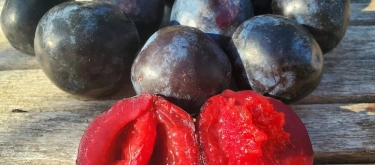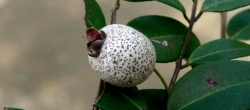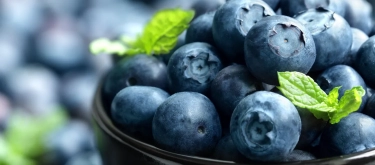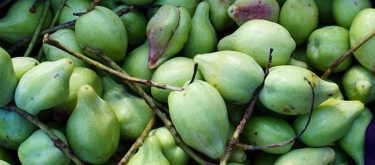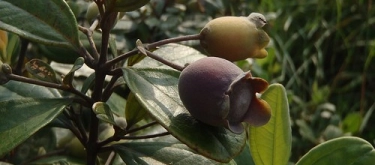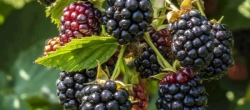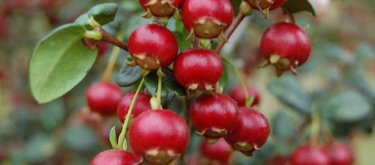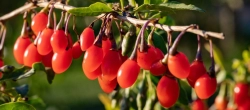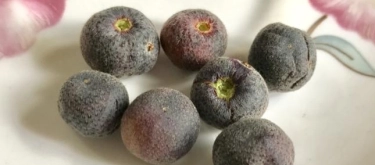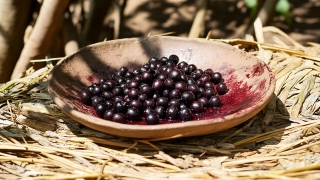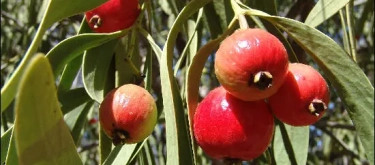Boobialla: Taste Profile, Aroma, Benefits and Health Risks
Boobialla (Myoporum insulare), also known as native juniper or coastal boobialla, is a salt-tolerant shrub native to Australia’s southern coastline. Its purple berries resemble small plums and have been consumed by Indigenous Australians as part of coastal bushfood traditions. Though not widely commercialised, boobialla holds increasing interest in modern culinary and botanical circles for its intense, aromatic flavor.
Boobialla is generally safe for consumption when ripe. As with many native berries, unripe fruit or overconsumption may cause mild digestive upset. Individuals with known sensitivities to nightshade family members should consume with caution.
What does Boobialla taste like?

Complete Sensory Description:
The taste of boobialla is a bold mix of juniper, blueberry, and blackcurrant, with resinous pine-like overtones and a mild astringent finish. It delivers a strong aromatic impact even in small quantities. The aroma is sharp and herbal, with notes of eucalyptus and crushed berry skin. The texture of ripe fruit is soft-skinned with juicy, seedy pulp. When dried, the berries become leathery and concentrated in flavor. Visually, ripe boobialla berries are deep purple to black with a glossy finish and range in size from 5–10 mm.
In-depth Flavor Analysis:
Boobialla contains terpenoids and essential oils that contribute to its piney, herbaceous character. Volatile compounds like pinene, limonene, and cineole are common, mirroring those found in juniper and Australian native herbs. Anthocyanins provide not only the dark pigmentation but also subtle tannic and antioxidant qualities. The resinous aftertaste comes from lignan derivatives and polyphenolic compounds released during mastication.
Flavour Variations Depending on Preparation and Maturity:
-
Fresh and ripe: Bold, juicy, and aromatic with slight bitterness.
-
Unripe: Bitter, resinous, and not recommended for raw consumption.
-
Dried: Intensity increases with notes of forest floor, dried herbs, and stewed berries.
-
Cooked (e.g., jam or reduction): Mellowed bitterness with increased fruit depth and jammy sweetness.
-
Fermented (e.g., infused spirits): Amplifies the botanical complexity, comparable to gin or vermouth bases.
Varieties and Culinary Applications:
While Myoporum insulare is most recognized, other species such as Myoporum montanum and Myoporum acuminatum may yield edible but slightly different-tasting fruits. Boobialla is used in chutneys, infused spirits, wild berry jams, and savory sauces for game meats. Dried berries can be ground into a spice blend. In small doses, it’s valued for aromatic accents rather than bulk sweetness.
Selection and Storage:
Harvest only fully ripened, dark berries. Discard any green or underripe fruit. Store fresh berries in the refrigerator for up to 5 days. Dried berries should be stored in an airtight container away from moisture and light, retaining potency for several months.
Nutritional Insights:
Boobialla berries are a source of vitamin C, flavonoids, and antioxidant polyphenols. They may assist in reducing inflammation, oxidative stress, and microbial activity. Traditional uses include wound care and cold remedies in Indigenous coastal medicine.
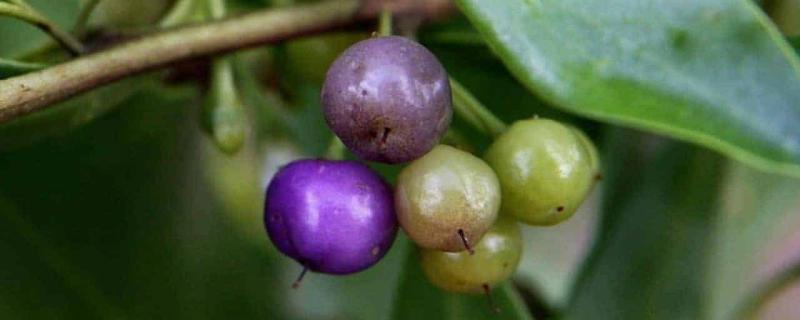
Expert Insights & Culinary Tips:
-
Best used sparingly due to its intensity.
-
Excellent in gin infusions, paired with citrus peel and pepperberry.
-
Combine with bush tomato or quandong for native chutneys.
-
Works well in chocolate truffles for an earthy contrast.
Interesting and Curious Facts:
-
The name "boobialla" is derived from Indigenous language groups in southeastern Australia.
-
Coastal boobialla plants help stabilise sand dunes and act as natural windbreaks.
-
Its resemblance to juniper has made it a subject of interest in Australian craft distilling.
Harm and Dietary Considerations:
While ripe boobialla is edible, overconsumption or ingestion of unripe fruit may lead to nausea. There is limited toxicological research, so caution is advised with wild harvesting. Not recommended for children under 5 unless prepared and verified ripe.
Religious Dietary Considerations:
Boobialla is plant-based and aligns with dietary practices in vegan, Halal, Kosher, and vegetarian traditions.
Phytochemical Composition & Functional Properties:
Boobialla contains terpenes such as alpha-pinene, cineole, and sabinene, which contribute to its aromatic and antimicrobial profile. It is also rich in anthocyanins and lignans, offering anti-inflammatory and antioxidant effects. Polyphenols support vascular health and may provide mild antibacterial action.
Interactions with Other Flavors (Flavor Pairing Science):
Boobialla pairs well with dark chocolate, orange zest, pepperberry, and rosemary. It resonates with botanicals found in gin, making it a useful element in spirit crafting. Its forest-like depth complements earthy ingredients like beetroot and mushroom.
Cultural & Regional Uses Around the World:
While largely endemic to Australia, similar Myoporum species have been used in traditional medicines across the Pacific Islands. In Australian Indigenous communities, the fruit and leaves are used in both dietary and topical applications.
Visual & Aesthetic Culinary Use:
The deep indigo of ripe boobialla provides rich coloring in reductions, glazes, and syrups. It is occasionally used as a natural food dye and for dramatic effect in gourmet plating, especially when paired with white cheeses or dark confections.
Final Thoughts & Sensory Journey:
Boobialla is a sensory powerhouse of the coastal Australian flora — aromatic, dark, and intensely flavorful. With its juniper-like complexity and rich nutrient profile, it bridges the gap between seasoning and fruit, tradition and innovation.
Resources:
-
Australian Bush Superfoods by Lily Bennett & Thomas Avery (2021). ISBN: 9781925868860
-
Wild Food Plants of Australia by Tim Low (1989). ISBN: 9780207169304
-
Plants of Coastal Dunes by John Pearn (1996). ISBN: 9780646305815
-
CRC Handbook of Medicinal Herbs by James A. Duke (2002). ISBN: 9780849312847
